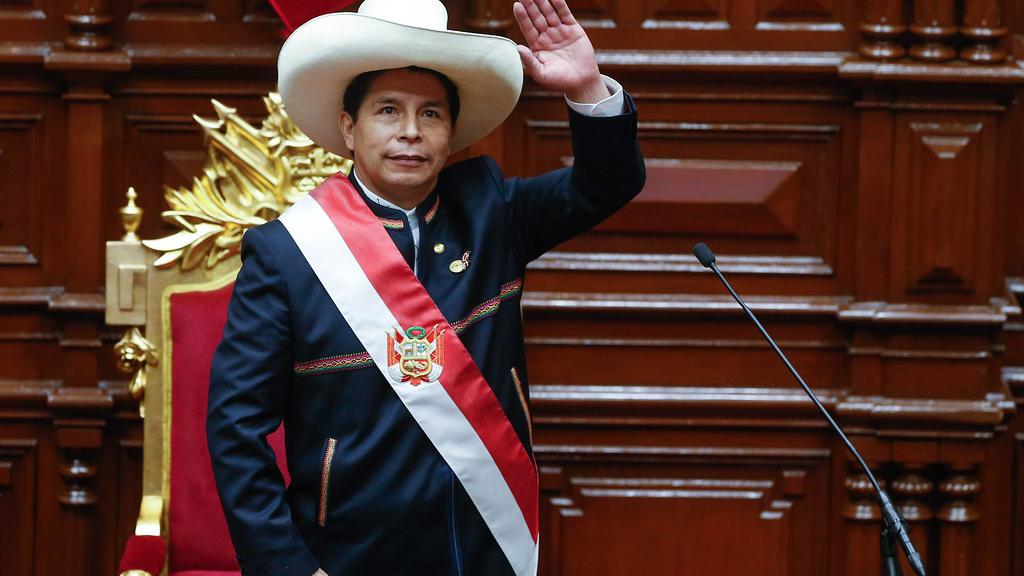Peru after Castillo

First published at New Left Review.
If the former Peruvian dictator Alberto Fujimori’s self-coup of 5 April 1992 was a tragedy for democracy, then Pedro Castillo’s attempted self-coup of 7 December 2022 was little more than a farce. Whereas the legacy of the former endures to this day, the latter was over in a couple of hours. After an abortive attempt to dissolve Congress, install a ‘government of exception’ pending new parliamentary elections and undertake a root-and-branch overhaul of the judiciary, Castillo set out for the Mexican embassy, where he presumably intended to claim asylum. He was arrested by his own security detail while stuck in traffic en route. In an ironic twist of fate, Fujimori and Castillo are now detained in the same jail.
It is not entirely clear why Castillo made this move. True, he faced a third impeachment process. But as with previous attempts to unseat him, the votes simply weren’t there. He may have feared that the investigations into his alleged corruption posed an imminent danger, and decided it was either now or never. Or perhaps he thought that shuttering Congress and calling new elections would reinvigorate his popular support. If so, he was mistaken. The manoeuvre was condemned across the board, his cabinet ministers resigned, and the armed forces refused to support him.
In the 2021 elections, Castillo secured a razor-thin majority by pledging to increase social spending and reform Peru’s broken economic model. His success was hugely symbolic: an indigenous teacher and trade unionist from the impoverished highlands had come to power the same year as the country’s bicentennial. With Castillo in power, some thought, deep-rooted inequalities could finally be addressed. Yet, since then, his presidency has been an abject failure, with no major political or economic reforms to speak of. Most of the blame lies with Congress and the media, which have been relentless in their attempts to bring him down. But Castillo also bears some responsibility for this disaster. He has made one poor decision after another – on ministerial appointments in particular – and allowed his administration to be tarnished by corruption and incompetence.
Peru’s primary political cleavage is between the forces of fujimorismo and anti-fujimorismo. In 2021, those who opposed fujimorismo’s return to power – a varied constituency spanning rural indigenous voters and urban liberals and leftists – succeeded in defeating Keiko Fujimori, the daughter of the former dictator. Yet the fujimoristas, concentrated in populous urban centres, refused to recognize the election result and vowed to prevent Castillo from governing. Over the next year, the division between these groups drove constant conflict between the executive and legislature. The bulk of opposition to Castillo came from the right, but parts of the left also turned against him – including Perú Libre, the nominally Marxist party that supported his election bid and later expelled him for abandoning his social programme. In the resultant atmosphere of political turmoil, with meaningful reform rendered impossible, both the president and his opponents in Congress lowered their horizons and began to focus on the basic task of ensuring their political survival. Ideological differences were subordinated to each group’s attempts to protect their status and extend their opportunities for graft.
Now, with Castillo gone, vice-president Dina Boluarte, a lawyer with limited political experience, has become the country’s first female premier. Again, the symbolism is significant: Peru is a socially conservative country where many of the changes achieved by feminist movements in neighbouring states are still out of reach. What her presidency will mean for women’s rights remains to be seen. Her public profile is less toxic than Castillo’s, but she will inevitably face the same Congressional bombardment and hostile media coverage, without the legitimacy conferred by an election victory. It is doubtful whether she will be able to stay in office until Castillo’s term expires in 2026. To survive, she will have to build bridges with the electorate, particularly those who voted for Castillo and are now calling for new elections. Much will depend on what type of cabinet she puts together and the signals it sends about how she plans to govern. She has expressed her intention to make the government a broad church, yet a technocratic cabinet that seeks to appease Congress may encounter resistance among the voters that elected Castillo.
In recent years, the armed forces have refrained from directly intervening in the political sphere. This may change, however, if figures such as Antauro Humala gain greater traction. The brother of former president Ollanta Humala (2011-16), Antauro served a prison sentence for his role in the failed military uprising in 2005. He now leads a nationalist movement called ‘Etnocacerismo’ (a reference to Peruvian military hero and former president Andrés Avelino Cáceres) with a highly visible paramilitary element. It has so far won the support of some rural communities and retired soldiers, and Humala hopes to use it as a launch-pad for his 2026 presidential campaign. If he manages to cast himself as an alternative to the deadlock between fujimorismo and anti-fujimorismo, Peru may well witness the emergence of a new and uniquely dangerous political tendency.
For now, though, Boluarte’s presidency will probably offer more of the same. Political instability has become the norm in Peru. The country has had six presidents since 2016, none of whom has served a full term. Castillo proposed a new constitution to challenge the country’s neoliberal model, but not even the establishment of a constituent assembly – now a remote prospect – would resolve this systemic political crisis. The president’s removal may give the new administration some temporary breathing space, but the dynamics that generate political instability – parties that operate as kleptocratic machines, divided branches of government, the polarization between fujimorismo and its opponents – will persist.